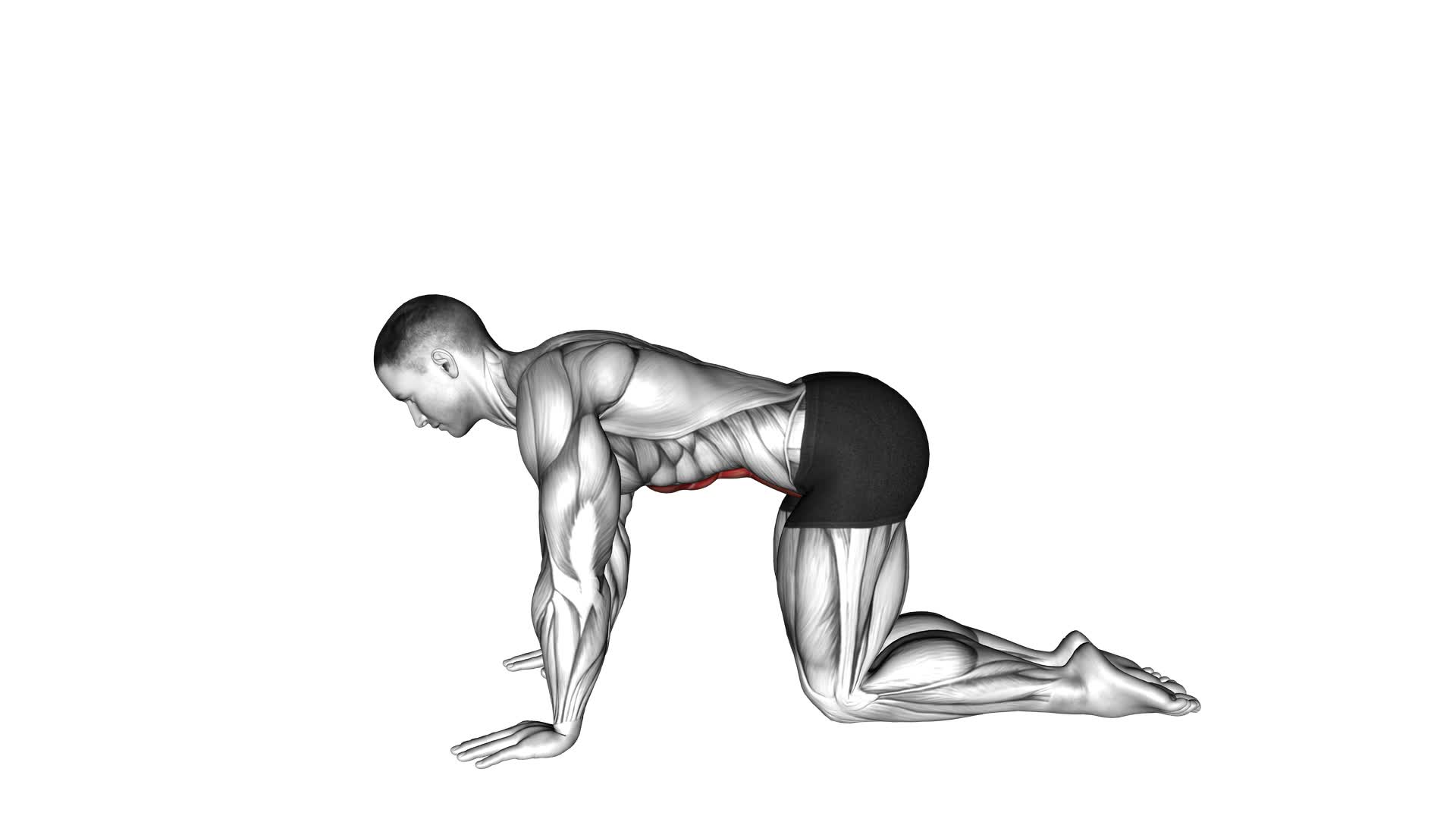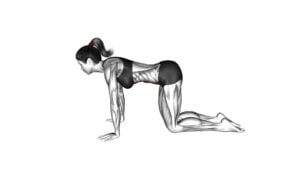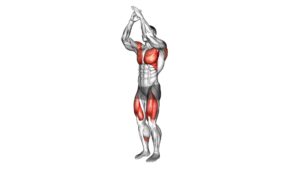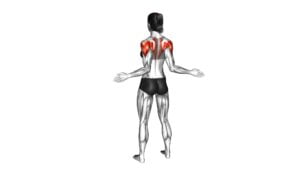Kneeling Abdominal Draw-In – Video Exercise Guide & Tips

Are you looking for a quick and effective way to strengthen your core? Look no further than the kneeling abdominal draw-in exercise.
Watch This Exercise Video
In this video exercise guide, we'll show you the proper form and technique to engage your abdominal muscles and enhance your stability.
With just a few simple steps, you can start working towards a stronger core.
Plus, we'll share some tips to increase the difficulty and avoid common mistakes.
Let's get started!
Key Takeaways
- Strengthening and toning abdominal muscles
- Improving core stability and posture
- Enhancing body control and balance
- Alleviating lower back pain
Benefits of the Kneeling Abdominal Draw-In
Discover the numerous benefits you can experience by incorporating the kneeling abdominal draw-in into your workout routine. This exercise is a key component of progressive training and is highly effective in improving core stability.
The kneeling abdominal draw-in specifically targets the deep muscles of the abdomen, including the transverse abdominis, which is responsible for providing support and stability to the spine.
By regularly performing this exercise, you can strengthen and tone your abdominal muscles, leading to a more defined midsection. Additionally, the kneeling abdominal draw-in helps improve posture by promoting proper alignment of the spine. It also enhances overall body control and balance, making it an excellent choice for athletes and individuals involved in sports that require stability and agility.
Furthermore, incorporating the kneeling abdominal draw-in into your workout routine can help alleviate lower back pain. The exercise activates the deep core muscles, which provide support to the lower back, reducing the strain on the lumbar spine. This can be especially beneficial for individuals who sit for long periods or have weak core muscles.
Proper Form and Technique
To perform the kneeling abdominal draw-in exercise correctly, position yourself on all fours with your hands directly under your shoulders and your knees directly under your hips. This starting position ensures proper alignment and stability throughout the exercise. Engaging in proper form and technique is essential to maximize the benefits of this exercise and prevent injury.
One key aspect of proper form is maintaining a neutral spine position. Avoid arching or rounding your back during the movement. Focus on stabilizing your core and drawing your navel toward your spine. This contraction engages your deep abdominal muscles effectively.
Another important aspect is progressive overload. As you become more comfortable with the exercise, you can increase the difficulty by adding resistance, such as a stability ball or an exercise band. This will challenge your core muscles even more and promote strength gains.
Breathing techniques are also crucial. Inhale deeply through your nose before starting the movement, and exhale slowly as you draw your navel in. This helps stabilize your core and enhances the effectiveness of the exercise.
Equipment Needed for the Exercise
To perform the kneeling abdominal draw-in exercise, you'll need the following equipment. First and foremost, you'll need a mat or a comfortable surface to kneel on. This will provide cushioning and support for your knees throughout the exercise. Additionally, it's important to have a stable surface to place your hands on, such as a bench or a step. This will help you maintain balance and stability during the exercise.
In terms of core activation, you may also benefit from using an exercise ball. By placing your hands on the ball instead of a stable surface, you'll engage more muscles in your core as you work to stabilize yourself. This can enhance the effectiveness of the exercise and challenge your core muscles even more.
To ensure proper alignment techniques, it's recommended to have a mirror or a video recording device. This will allow you to check your form and make any necessary adjustments. Proper alignment is essential for targeting the correct muscles and avoiding strain or injury.
Step-by-Step Video Guide
To perform the kneeling abdominal draw-in exercise with proper form, it's important to follow the step-by-step video guide.
This guide will demonstrate the correct technique, ensuring you engage your core muscles effectively.
Additionally, the video will highlight common mistakes to avoid to prevent injury and maximize the benefits of this exercise.
Proper Form Demonstration
Follow these step-by-step instructions to correctly demonstrate proper form for the kneeling abdominal draw-in exercise.
- Begin by kneeling on a mat or soft surface, with your knees directly under your hips and your hands placed on your thighs.
- Keep your spine in proper alignment by maintaining a neutral position throughout the exercise.
- Engage your core muscles by drawing your navel towards your spine.
- Take a deep breath in and as you exhale, gently pull your belly button in towards your spine, activating your transverse abdominis muscle.
- Hold this contraction for 10-15 seconds while continuing to breathe normally.
- Repeat this exercise for 10-12 repetitions, focusing on maintaining proper alignment and breathing technique throughout.
This exercise is effective for strengthening the deep abdominal muscles and improving core stability.
Common Mistakes to Avoid
Avoid these common mistakes when performing the kneeling abdominal draw-in exercise to ensure proper form and maximize your results.
One common mistake is allowing your back to round instead of maintaining a neutral spine. This not only reduces the effectiveness of the exercise but also puts unnecessary strain on your lower back. To avoid this, engage your core muscles and focus on keeping your spine straight throughout the movement.
Another mistake isn't fully exhaling as you draw your belly button towards your spine. This reduces the activation of your deep abdominal muscles. Remember to exhale fully and draw your belly button in towards your spine as much as possible.
By avoiding these common mistakes and focusing on proper technique, you'll improve the effectiveness of the kneeling abdominal draw-in exercise.
Now let's move on to the benefits of this exercise.
Benefits of This Exercise
You can experience numerous benefits from incorporating the kneeling abdominal draw-in exercise into your workout routine.
This exercise is highly effective for core activation and abdominal strengthening. By performing the kneeling abdominal draw-in, you engage the deep core muscles, including the transverse abdominis, which helps stabilize your spine and improve posture.
This exercise also targets the rectus abdominis, obliques, and hip flexors, leading to improved overall core strength.
Additionally, the kneeling position reduces strain on the lower back, making it a suitable exercise for individuals with back issues.
Regularly including the kneeling abdominal draw-in in your routine can help you develop a stronger and more stable core, enhancing your athletic performance and reducing the risk of injuries.
Tips for Increasing the Difficulty
To increase the difficulty of the kneeling abdominal draw-in exercise, you can incorporate progressive resistance training by using a resistance band or weighted object. This will challenge your core muscles even more and help you build strength.
Another option is to try different core stability variations, such as performing the exercise on an unstable surface like a stability ball.
Lastly, you can explore advanced exercise modifications like adding a twist or extending your legs to further engage your abdominal muscles.
Progressive Resistance Training
Increase the difficulty of your kneeling abdominal draw-in exercise by gradually adding resistance.
Progressive resistance training is an effective way to challenge your core muscles and enhance their strength. To implement this training technique, you can use various tools such as resistance bands, dumbbells, or weighted vests.
Start by incorporating light resistance and gradually increase the load as your core strength improves. For example, you can attach a resistance band around your hips or hold a dumbbell against your chest while performing the kneeling abdominal draw-in. This added resistance will intensify the exercise, forcing your core muscles to work harder.
Remember to maintain proper form and control throughout the movement to maximize the benefits of progressive resistance training for your core.
Core Stability Variations
To challenge your core muscles even further, incorporate core stability variations into your kneeling abdominal draw-in exercise. By adding these variations, you can enhance the effectiveness of your workout and increase the difficulty level.
Here are three core stability exercises that can help you strengthen your core:
- Plank with leg lift: Begin in a plank position, then lift one leg off the ground while maintaining a straight body alignment. Hold for a few seconds, then switch legs.
- Side plank with hip dip: Start in a side plank position, then lower your hip towards the ground and lift it back up. Repeat on the other side.
- Swiss ball rollouts: Kneel on a Swiss ball with your hands on the ground. Roll the ball forward, extending your body, and then roll it back in.
Incorporating these core strengthening techniques will challenge your core stability and help you achieve a stronger and more stable core.
Advanced Exercise Modifications
For a more challenging workout, try incorporating advanced modifications to increase the difficulty of your kneeling abdominal draw-in.
One way to do this is by adding resistance. You can use a resistance band or weights to make the exercise more challenging.
Another option is to increase the range of motion. Instead of just pulling your belly button towards your spine, try extending your arms out in front of you or lifting your legs off the ground.
Additionally, you can incorporate instability by performing the exercise on an unstable surface, such as a stability ball or a BOSU ball. These advanced modifications will engage your core muscles even more and help you achieve greater strength and stability.
Now, let's move on to the next section and discuss common mistakes to avoid.
Common Mistakes to Avoid
You should avoid these common mistakes when performing the kneeling abdominal draw-in exercise. To ensure that you're getting the most out of this exercise and minimizing the risk of injury, keep the following points in mind:
- Improper posture: It's crucial to maintain proper posture throughout the exercise. Avoid rounding your back or slouching forward, as this can strain your lower back. Instead, keep your spine neutral and engage your core muscles to support your spine.
- Lack of core engagement: One of the key purposes of the kneeling abdominal draw-in exercise is to strengthen your core muscles. However, many people make the mistake of not fully engaging their core during the exercise. Focus on pulling your belly button in towards your spine and contracting your abdominal muscles throughout the movement.
- Overarching the lower back: Another common mistake is overarching the lower back, which can put excessive stress on the lumbar spine. To avoid this, maintain a slight pelvic tilt by tucking your tailbone under and engaging your glutes.
Frequently Asked Questions
How Many Sets and Repetitions Should I Do of the Kneeling Abdominal Draw-In Exercise?
To determine the sets and repetitions for the kneeling abdominal draw-in exercise, consider your fitness level and goals. Start with 2-3 sets of 10-12 repetitions.
As you progress, increase the intensity by adding variations like leg lifts or using an exercise ball.
This exercise targets your core muscles, improves stability, and enhances posture. Remember to engage your abs and breathe properly throughout the movement for maximum benefit.
Can I Do the Kneeling Abdominal Draw-In Exercise if I Have Lower Back Pain?
If you're dealing with lower back pain, it's important to be cautious when considering the kneeling abdominal draw-in exercise. It may aggravate your condition.
Instead, focus on alternative exercises that can strengthen your core without putting unnecessary strain on your lower back.
Remember, proper form and technique are crucial in any exercise, especially when dealing with an injury.
Consult with a healthcare professional for personalized advice and guidance.
Is the Kneeling Abdominal Draw-In Exercise Suitable for Beginners?
Yes, the kneeling abdominal draw-in exercise is suitable for beginners. It helps strengthen your core and improve stability.
To progress, you can increase the duration or add resistance. Avoid common mistakes like holding your breath or arching your back.
Remember to maintain proper form and engage your abdominal muscles throughout the exercise. With consistency and proper technique, you'll see improvements in your core strength and stability.
Can I Modify the Kneeling Abdominal Draw-In Exercise if I Don't Have a Stability Ball?
If you don't have a stability ball, there are alternative exercises you can do to work your abdominal muscles. However, it's important to note that using a stability ball during the kneeling abdominal draw-in exercise offers additional benefits.
The stability ball provides an unstable surface, which engages more muscles and challenges your core stability. So, if you don't have a stability ball, consider using other exercises that target the same muscle groups or try incorporating other stability training exercises into your routine.
How Long Should I Hold the Contraction During the Kneeling Abdominal Draw-In Exercise?
To maximize the effectiveness of the kneeling abdominal draw-in exercise, it's important to know how long to hold the contraction. Holding the contraction for at least 5-10 seconds is recommended to engage and strengthen the deep core muscles effectively.
This duration allows for optimal muscle activation and development. By progressing the exercise with longer contraction times over time, you can further challenge your core and reap the benefits of improved stability, posture, and overall core strength.
Conclusion
In conclusion, the kneeling abdominal draw-in is a beneficial exercise that targets the abdominal muscles. By maintaining proper form and technique, using the necessary equipment, and following the step-by-step video guide, individuals can effectively engage their core muscles.
To increase the difficulty, incorporating tips such as adding resistance or increasing the duration can be helpful. It's important to avoid common mistakes like arching the back or holding the breath.
Overall, the kneeling abdominal draw-in is an effective exercise for strengthening the core.

Author
Years ago, the spark of my life’s passion ignited in my mind the moment I stepped into the local gym for the first time. The inaugural bead of perspiration, the initial endeavor, the very first surge of endorphins, and a sense of pride that washed over me post-workout marked the beginning of my deep-seated interest in strength sports, fitness, and sports nutrition. This very curiosity blossomed rapidly into a profound fascination, propelling me to earn a Master’s degree in Physical Education from the Academy of Physical Education in Krakow, followed by a Sports Manager diploma from the Jagiellonian University. My journey of growth led me to gain more specialized qualifications, such as being a certified personal trainer with a focus on sports dietetics, a lifeguard, and an instructor for wellness and corrective gymnastics. Theoretical knowledge paired seamlessly with practical experience, reinforcing my belief that the transformation of individuals under my guidance was also a reflection of my personal growth. This belief holds true even today. Each day, I strive to push the boundaries and explore new realms. These realms gently elevate me to greater heights. The unique combination of passion for my field and the continuous quest for growth fuels my drive to break new ground.







